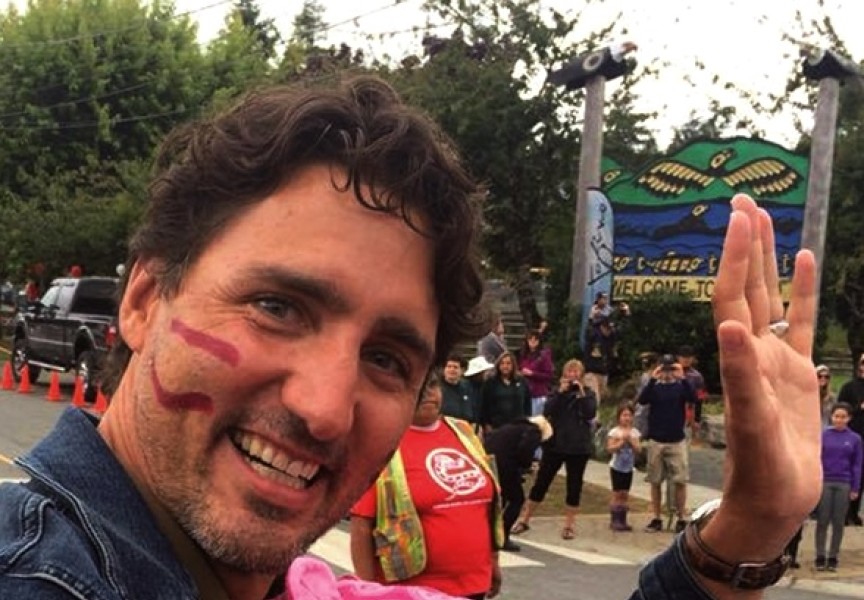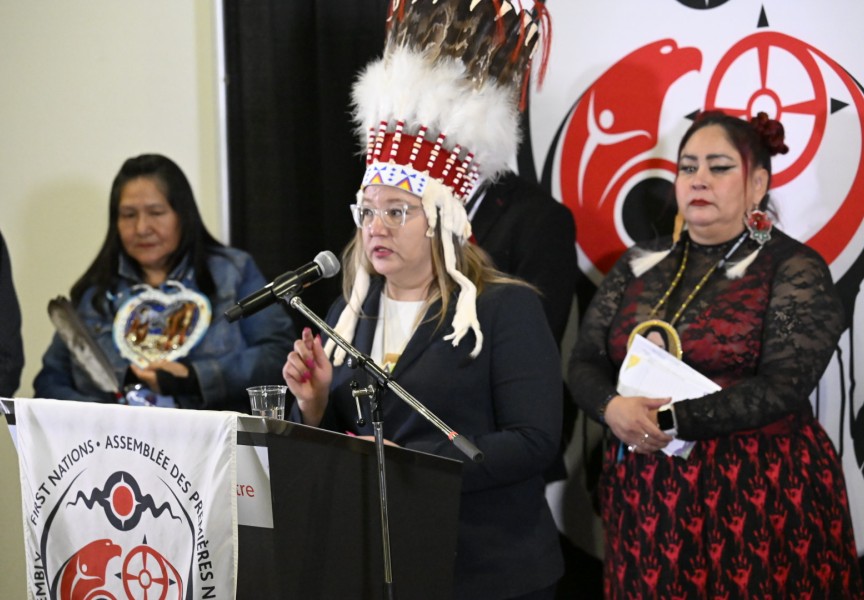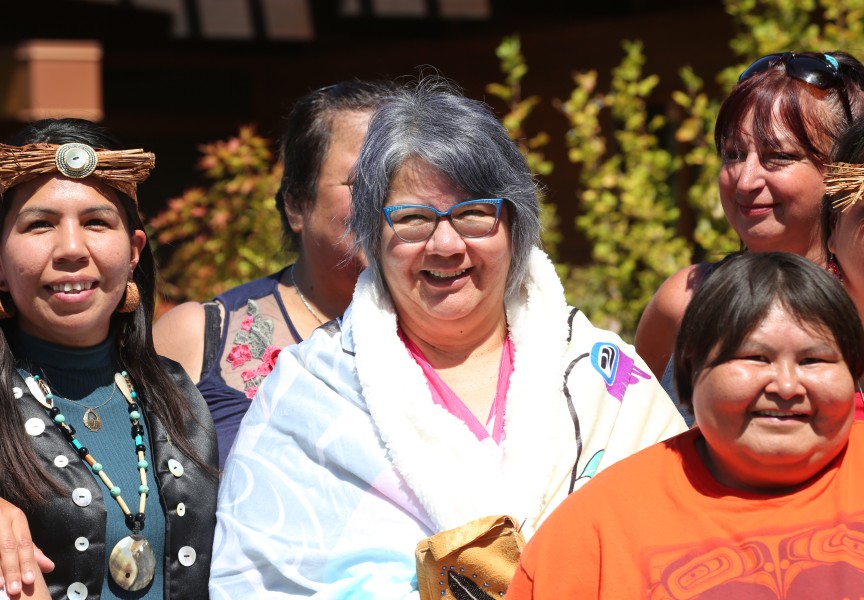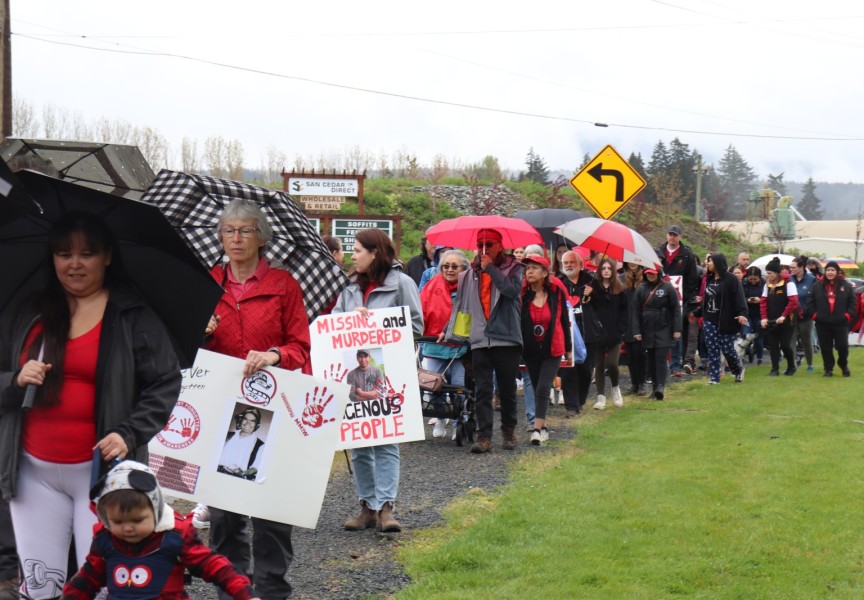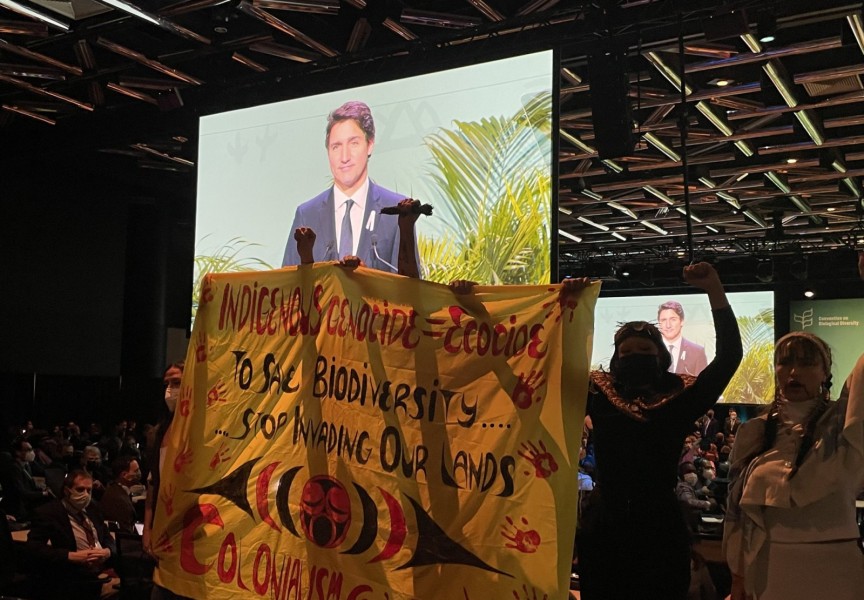Updated May 28, 2013 9:10 a.m.
An adopted member of Tseshaht First Nation has received a prestigious award from the Canadian Archaeological Association (CAA) for his work in uncovering and recording Nuu-chah-nulth history and culture.
Denis St. Claire received the Margaret and James F. Pendergast Award at the annual CAA convention, which took place May 15 through May 18 in Whistler, while long-time colleague Dr. Alan McMillan received the Smith-Wintemberg Award.
The award recognizes “extraordinary and exemplary” work by a Canadian avocational archaeologist, and had not been handed out since 2006.
“I’m just looking at it right now, and while it may be a bit over the top, it’s very pleasing,” St. Claire said this week from his home in Victoria.
The Port Alberni-born scientist graduated from what was still called Alberni District High School in 1965, and then attended the University of Victoria, where he pursued a dual career in teaching (high school) and archaeology.
“My father was born in what is now a ghost town, Eholt, in the B.C. Rockies in 1918, and his family moved to Port Alberni when he was six months old. He went fishing in dugout canoes with guys like George Clutesi. I went to school with Watts kids and Clutesi kids and Hamilton kids,” he said.
St. Claire worked in Salish territory for three years before launching his first dig at Shoemaker Bay in 1973, but his early years had already sensitized him to Nuu-chah-nulth culture.
“I taught 37 years in the classroom, the last 24 years in the gifted student program,” St. Claire said, adding that he also initiated a native education program.
While maintaining a full-time teaching career to provide for a growing family, St. Claire applied equal passion to his pursuit of Nuu-chah-nulth history. As he recalls now, the life/work balance became pretty intense.
“As a rule of thumb, for every day you spend in the field, you do two days in the lab recording and interpreting. Two months in the summer (fieldwork) means six months to complete the job.”
In his acceptance speech in Whistler, St. Claire paid tribute to the many Nuu-chah-nulth people who have contributed to his body of knowledge and paved the way for his 40 years of investigation into the culture and history, with special emphasis on the late Tseshaht Tyee Ha’wilth Adam Shewish, whom, along with Hupacasath elected chief Danny Watts, made the Shoemaker Bay Project possible.
“Adam Shewish was an icon. He died so very suddenly in 1990. He was taken away from us. There isn’t a week that goes by that his image doesn’t come to me. He was like a father to me. He was a father to me; he adopted me into Tseshaht.”
While St. Claire had grown up surrounded by Nuu-chah-nulth culture and friends, with the guidance of Adam Shewish, he was introduced to the leading chiefs and guardians of traditional knowledge including the “Five Pillars,” the five Tyee Ha’wiith of the Barkley Sound Nations.
“He opened the doors and suddenly I was welcomed into these other places.”
St. Claire said he was fortunate in that he was able to build on a strong foundation laid down by previous scientists, such as Edward Sapir, who, while he was actually an anthropologist working on the Nuu-chah-nulth language, left behind a huge volume of published and unpublished work.
Sapir trained some exceptionally gifted local people like Frank Williams and Alec Thomas, who were fluent in both Nuu-chah-nulth and English, to perform the orthographic recording and translation of the language and all its intricacies into English.
Over the course of his career, St. Claire would co-author a number of books with with Alan McMillan, starting with Alberni Prehistory, and most recently, Huu7ii: Household Archaeology at a Nuu-chah-nulth Village Site in Barkley Sound.
Over the years, there has been, there was a subtle shift in the direction and goals of the work, he said.
“After Shoemaker Bay, I decided I needed to do more than just put holes in the ground. I began to do far more ethnographical work than archaeology of Nuu-chah-nulth culture.”
That meant digging into the human history: who lived there and when? What caused shifts in habitation? Place names.
“More to the point, was it a resource area? Who used the resources? How did things change? All the things that would affect the archaeology of the area.”
All these points are critical to establishing the how and why of Nuu-chah-nulth traditional territory, broken down into its component nations. There is a historical and scientific imperative to recording the life of a people, St. Claire said, but in the 21st century, there is also a legal and political imperative. As B.C.’s First Nations go through the painstaking process of establishing their aboriginal rights and title as defined by the Canadian Constitution, they need the kind of ammunition that is recognized by the courts.
St. Claire said over the course of the years he realized that by establishing and documenting the social, cultural and economic history of Nuu-chah-nulth nations, he could help prevent them from being steamrollered by the Canadian courts.
Thanks to the interest and efforts of all of those early scientists like Sapir and the early bureaucrats like Gilbert Malcolm Sproat, the process of documenting the social and economic history of the Nuu-chah-nulth nations began almost at first contact, and has continued down through the generations. As a consequence, when Ahousaht First Nation led an action in B.C. Supreme Court to address an infringement of their aboriginal right to sell fish, they were able to produce an immense multi-source body of knowledge to prove that Nuu-chah-nulth nations engaged in organized commerce in seafood prior to contact with Europeans, and later adapted that commerce to include Europeans when they set up their first settlements in Nuu-chah-nulth territory.
By contrast, the North Coast Tsimshian Nation, Lax Kw’alaams, had a much more sporadic contact with Europeans and few cultural champions to record their economic history. While the Ahousaht suit proved successful, in the November 2011 Lax Kw’alaams Decision, the judge ruled that the Lax Kw’alaams had failed to demonstrate a pre-contact commerce in fish other than a small trade in eulachon oil.
“The onus is on First Nations to prove an issue of rights and title. I don’t think that’s right, but that’s how it is,” St. Claire said.
The lesson is, if you haven’t done your homework to bring forward a bulletproof case, you can get blown out of court in short order.
During the course of his ethnographic study, St. Claire said he was fortunate to be able to work with many elders who could remember family members who had been able to live much closer to their land and culture and speaking only the language unique to their nation.
After 40 years, St. Claire has become an elder in his own right, and he is in the process of turning his mission over to a new generation. More and more, Nuu-chah-nulth members are taking the reins in restoring the language and fighting for control of their birthright.
“There is a large group of Tseshaht young people who call me uncle,” he said. Recently, he recalled, a close Tseshaht friend visited, bringing along four children and four grandchildren.
“I have my own biological children, but having my own Tseshaht family in my house, I just sat back in my easy chair, watching and having a really good feeling about it.”


